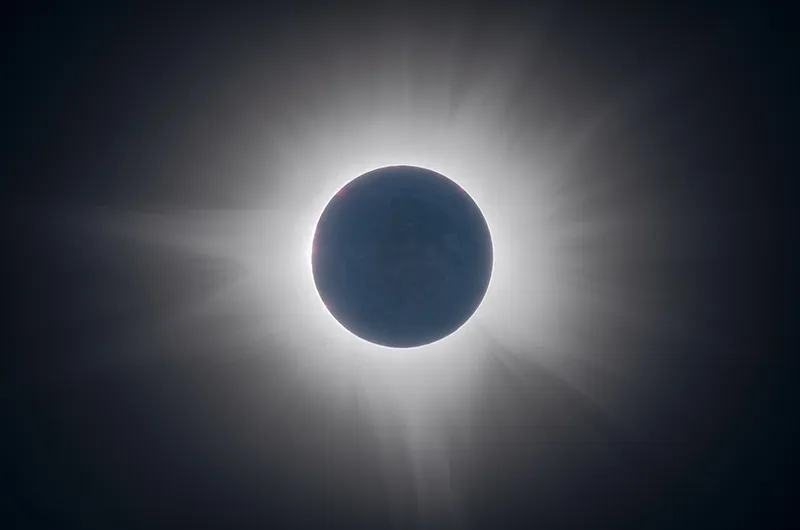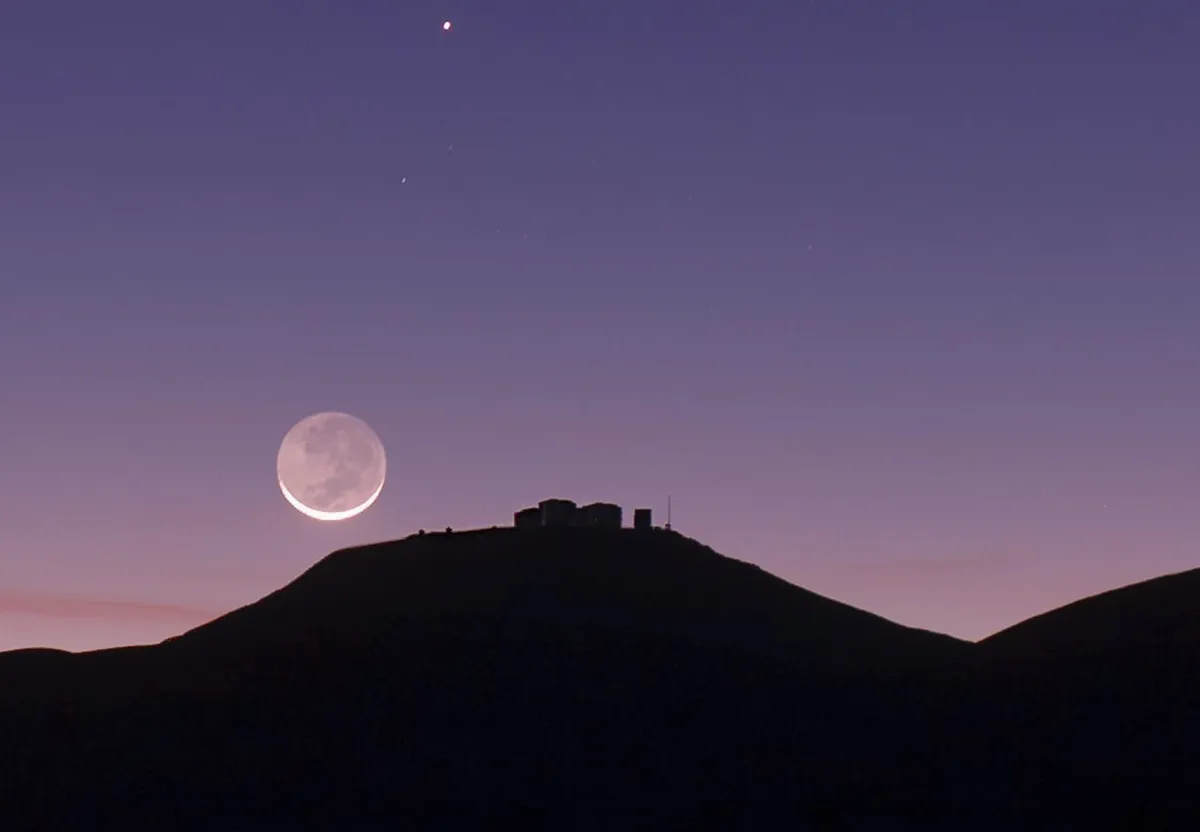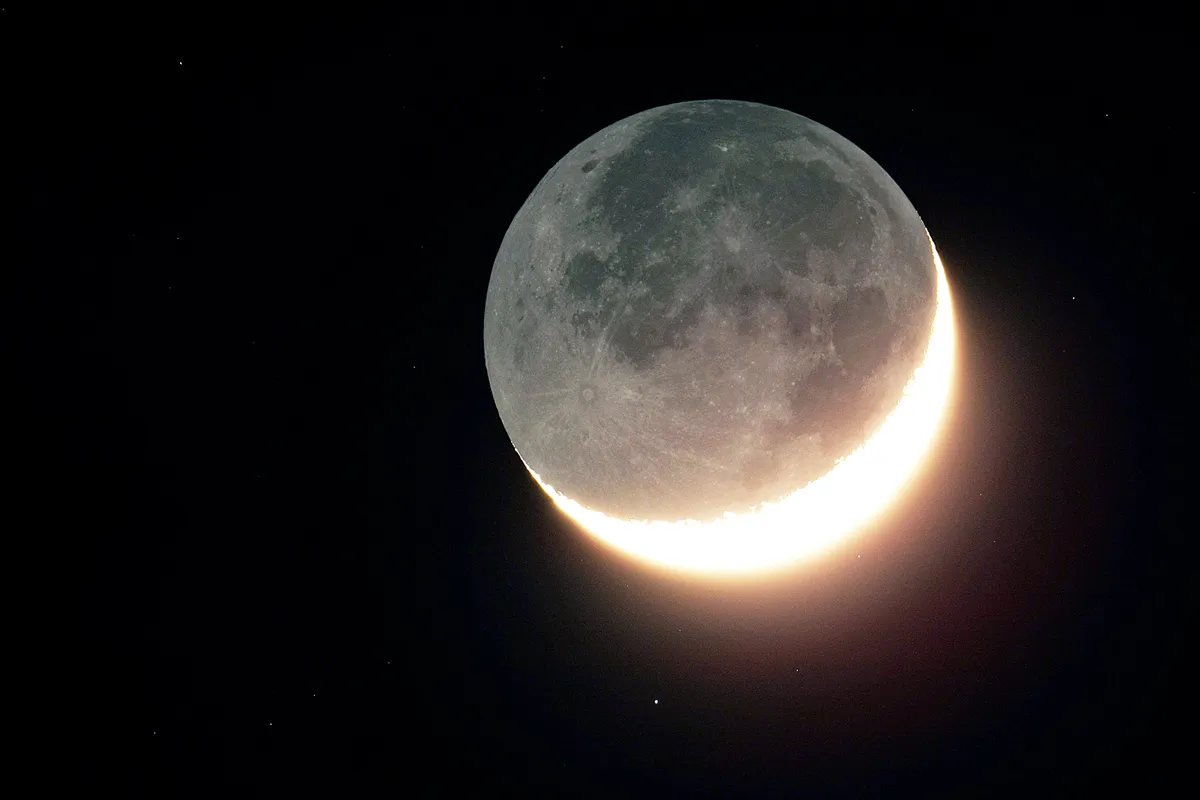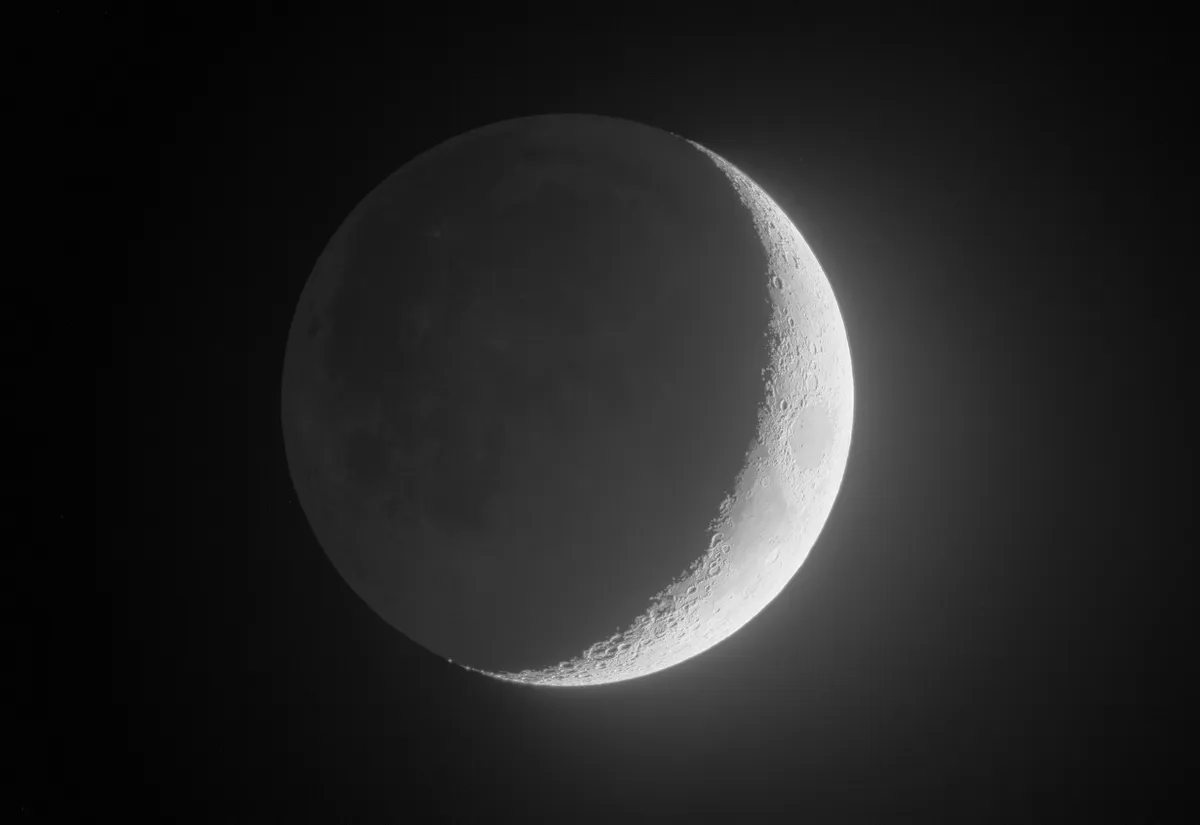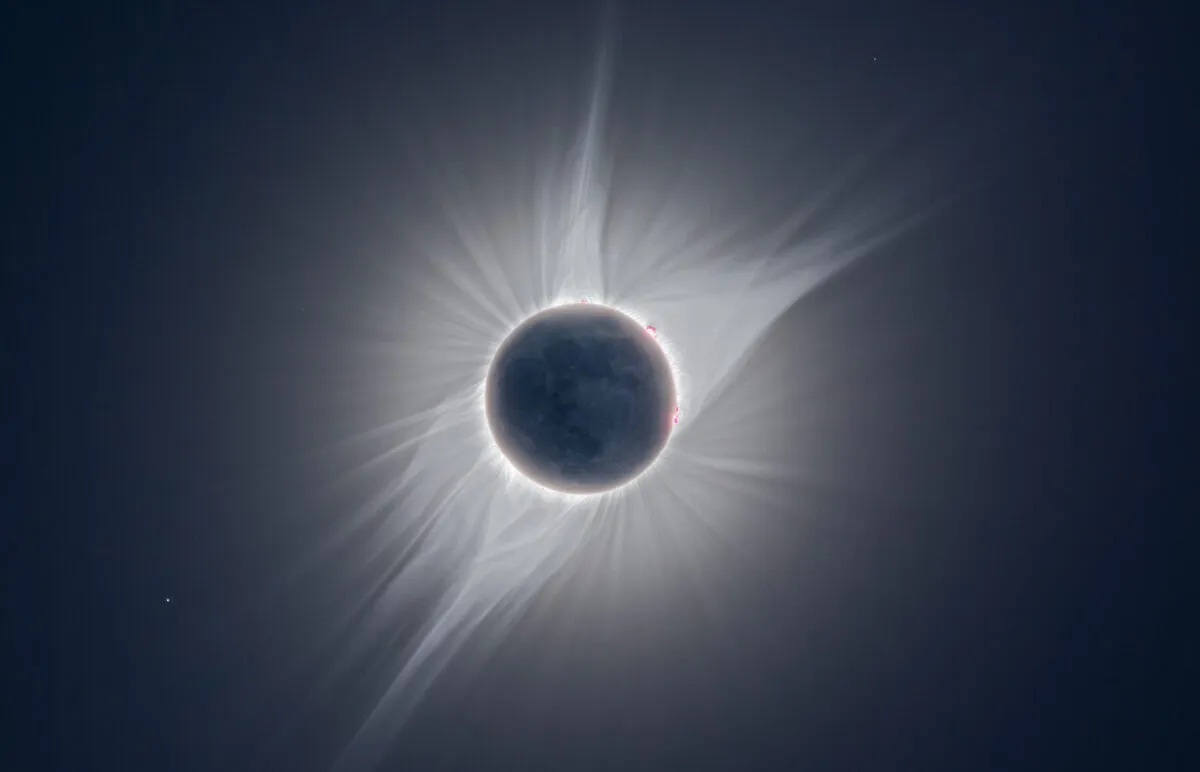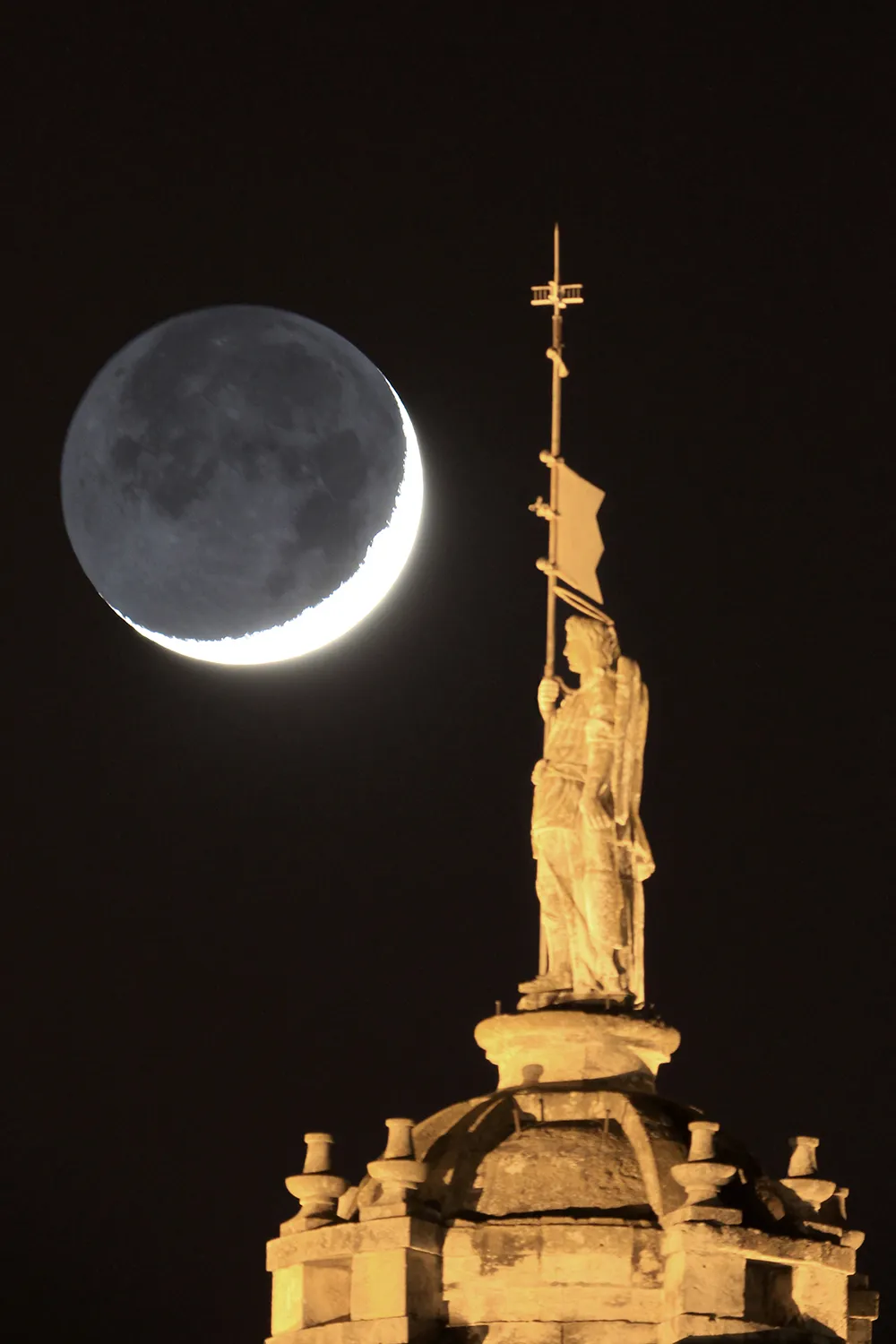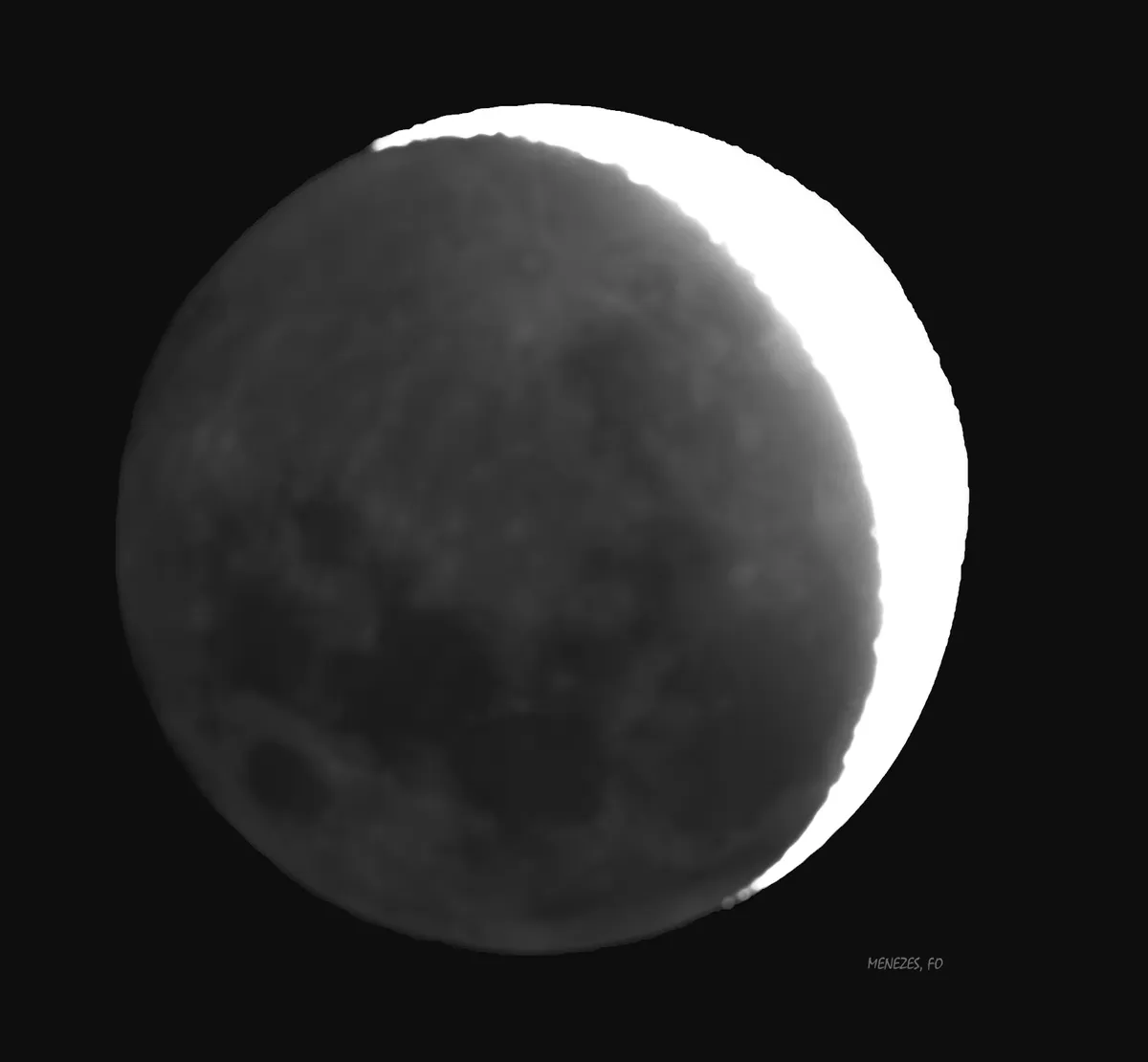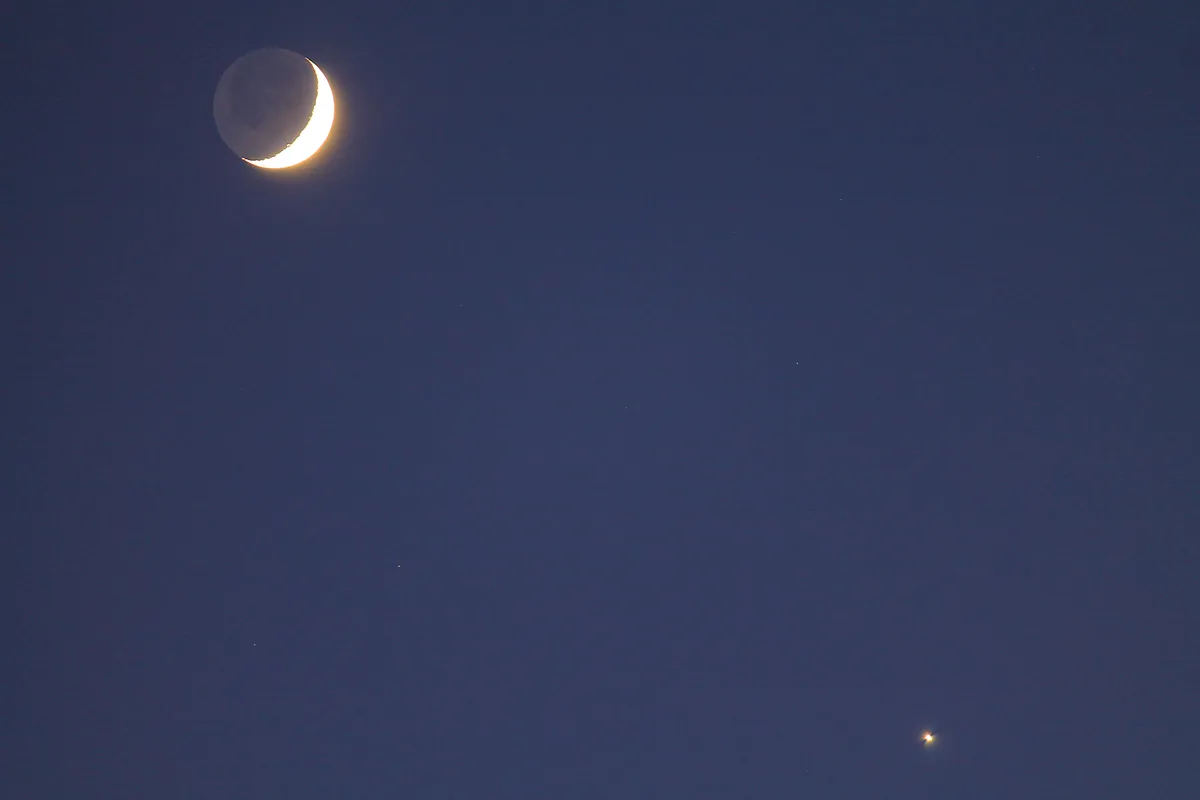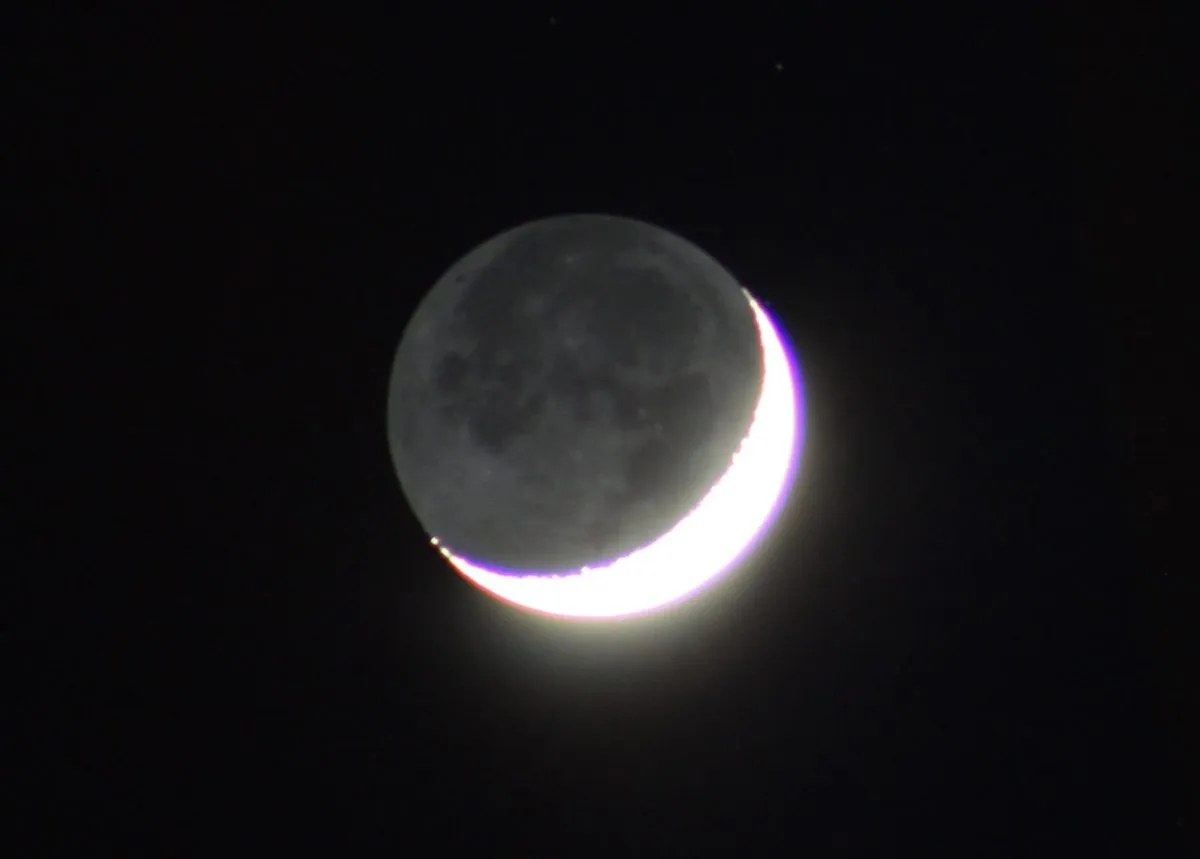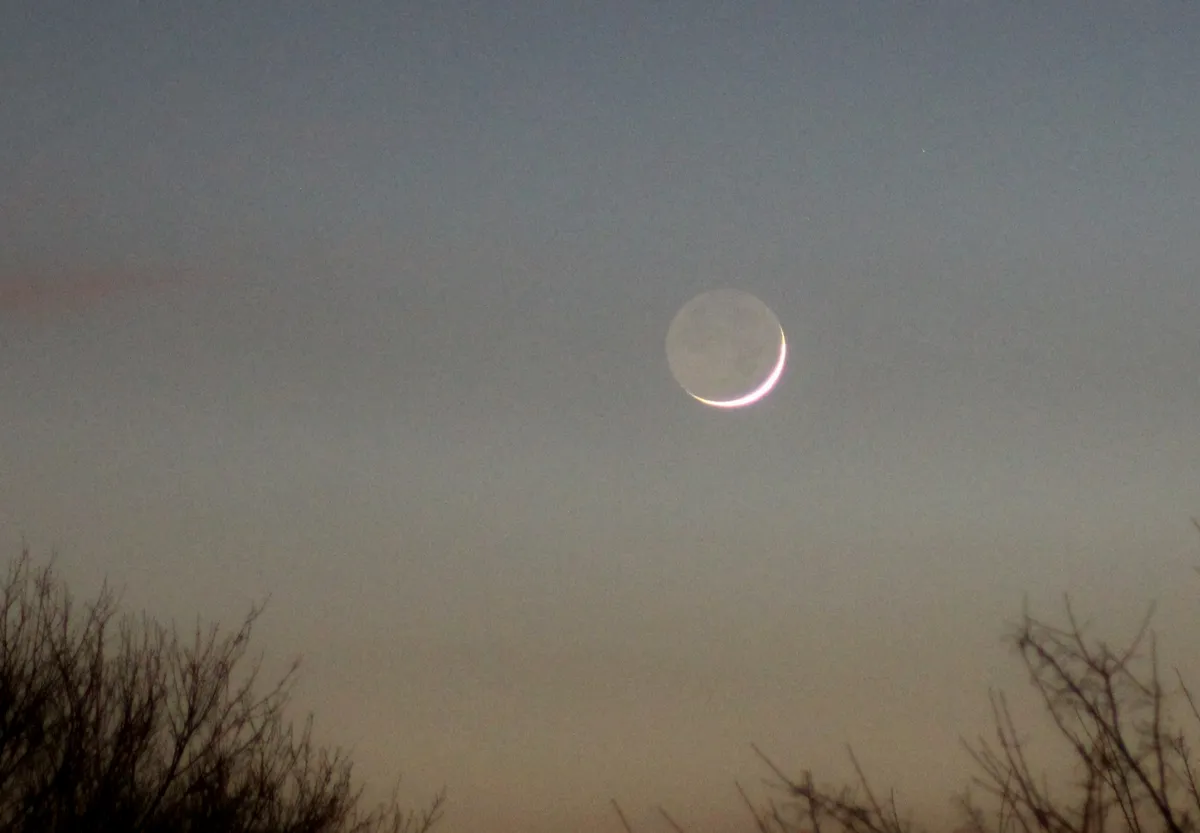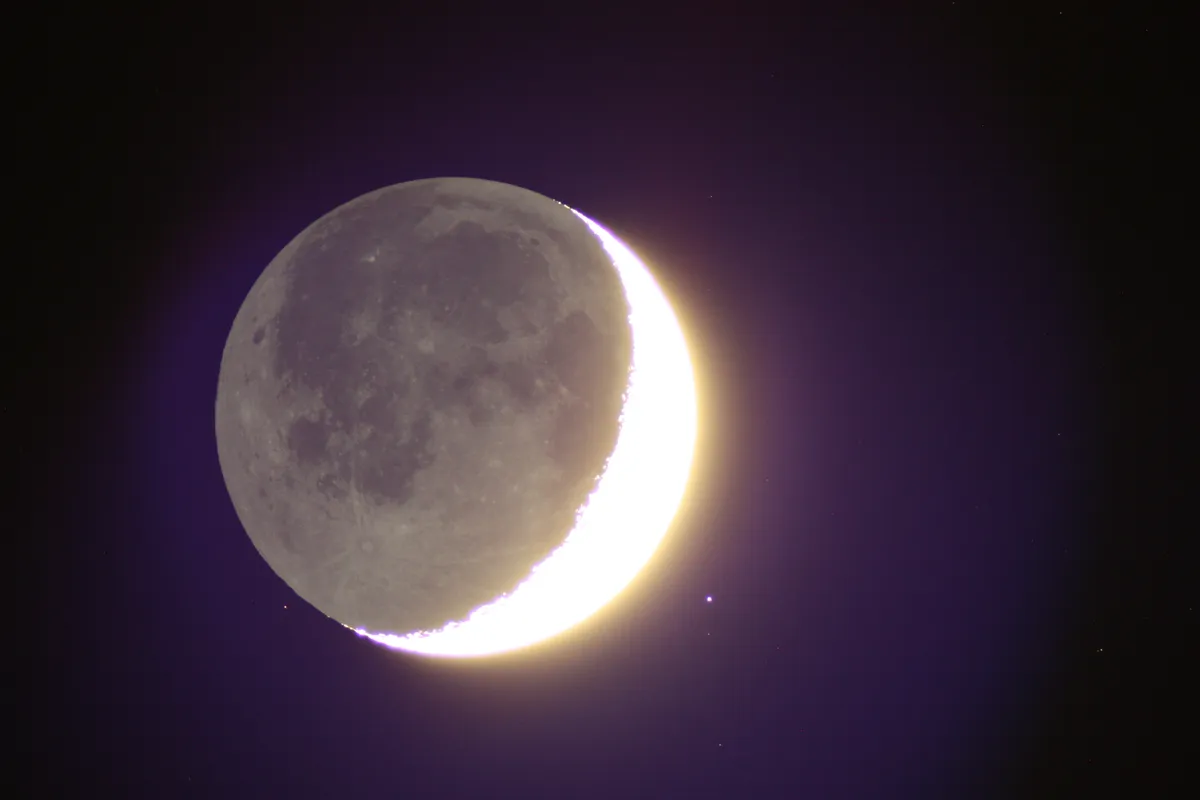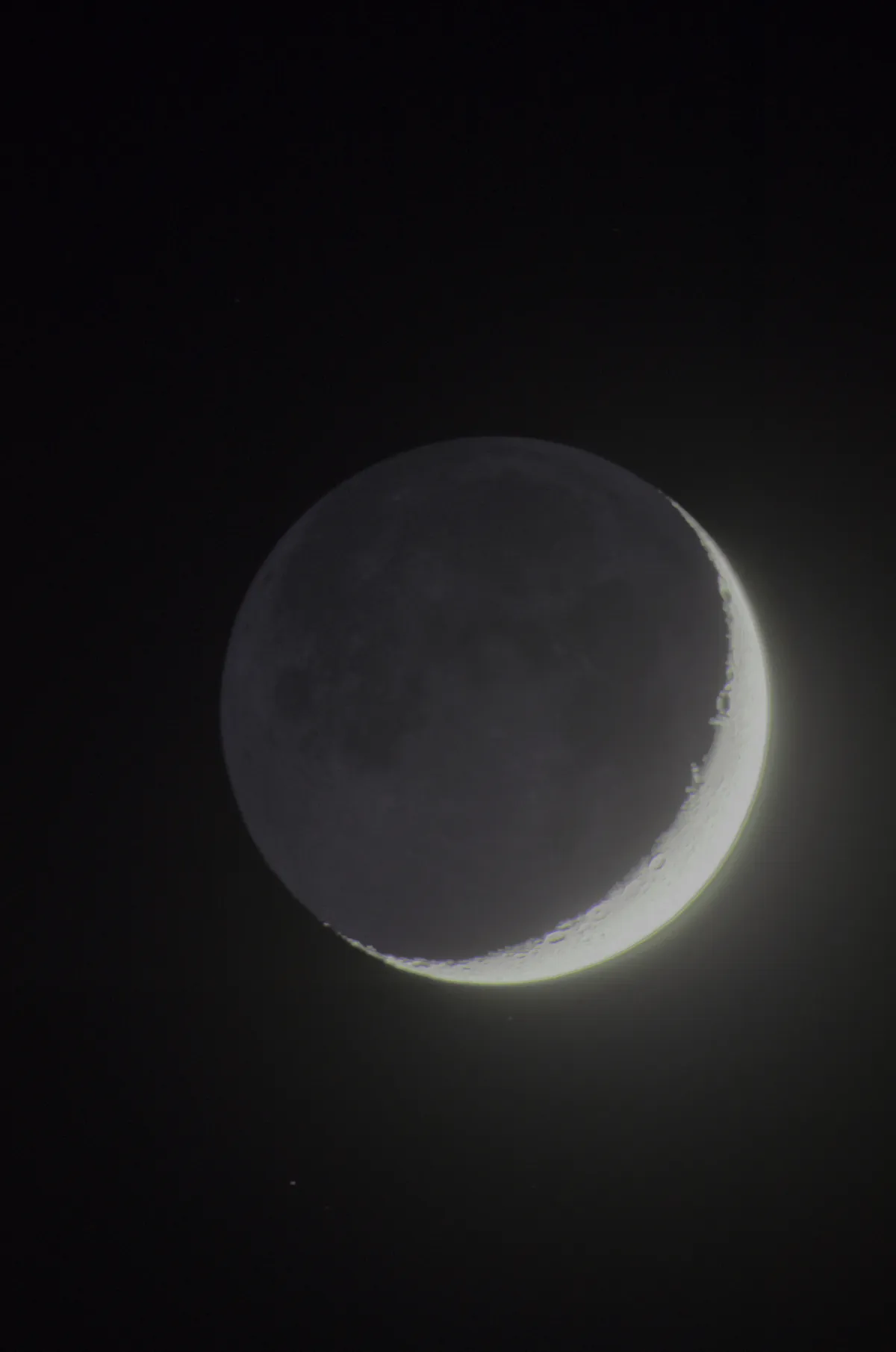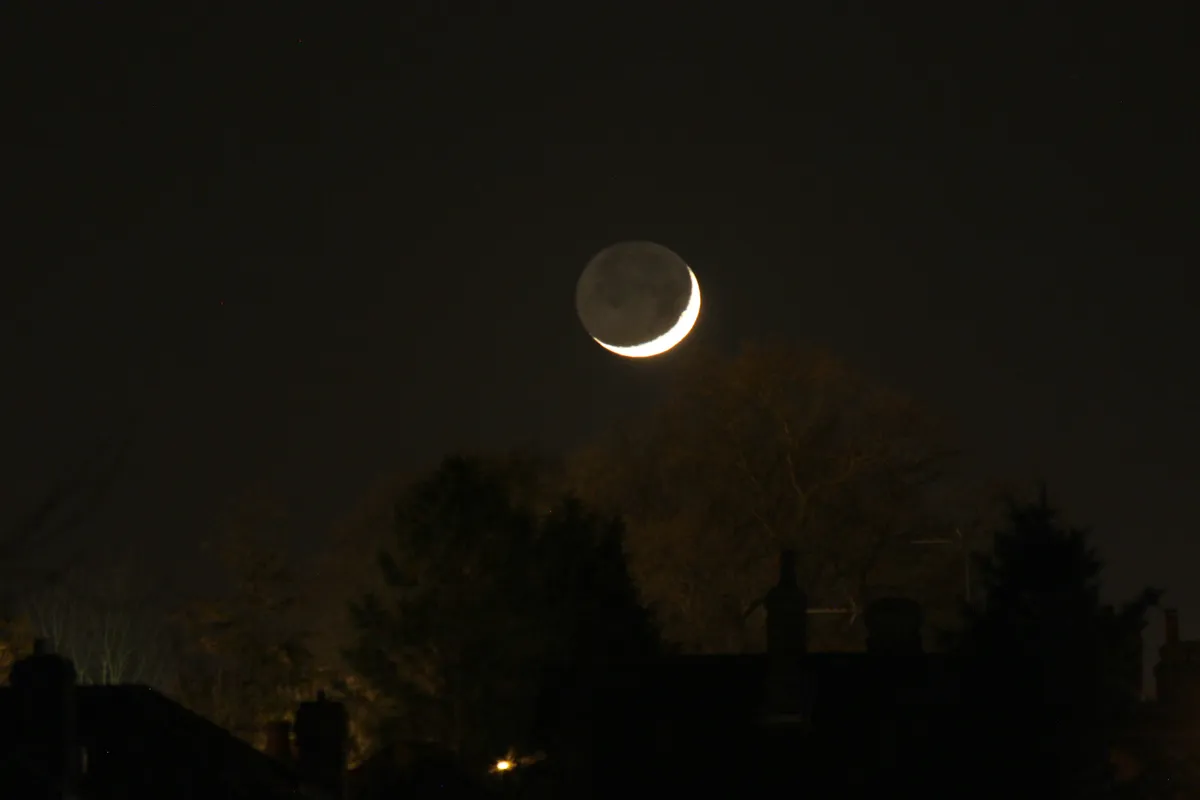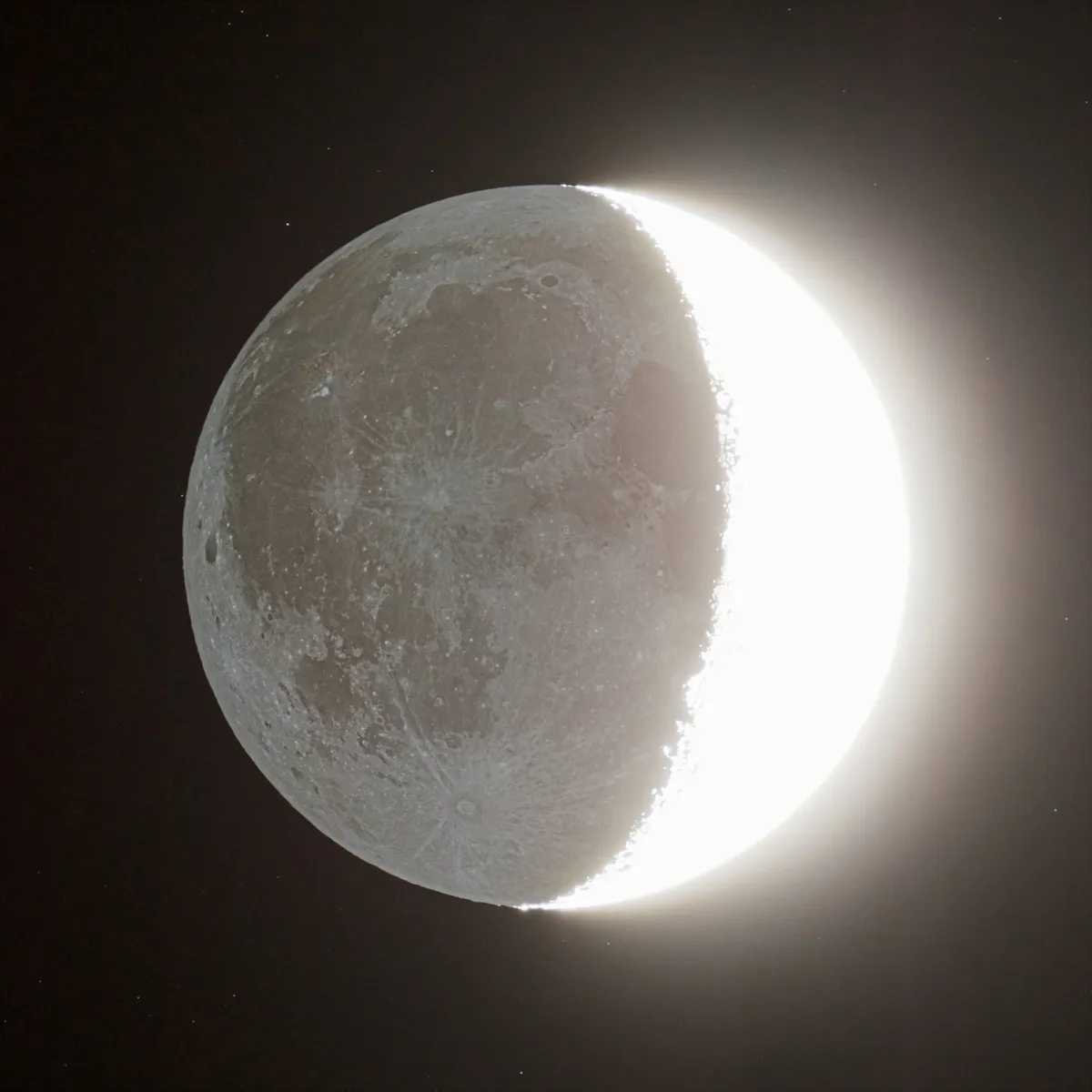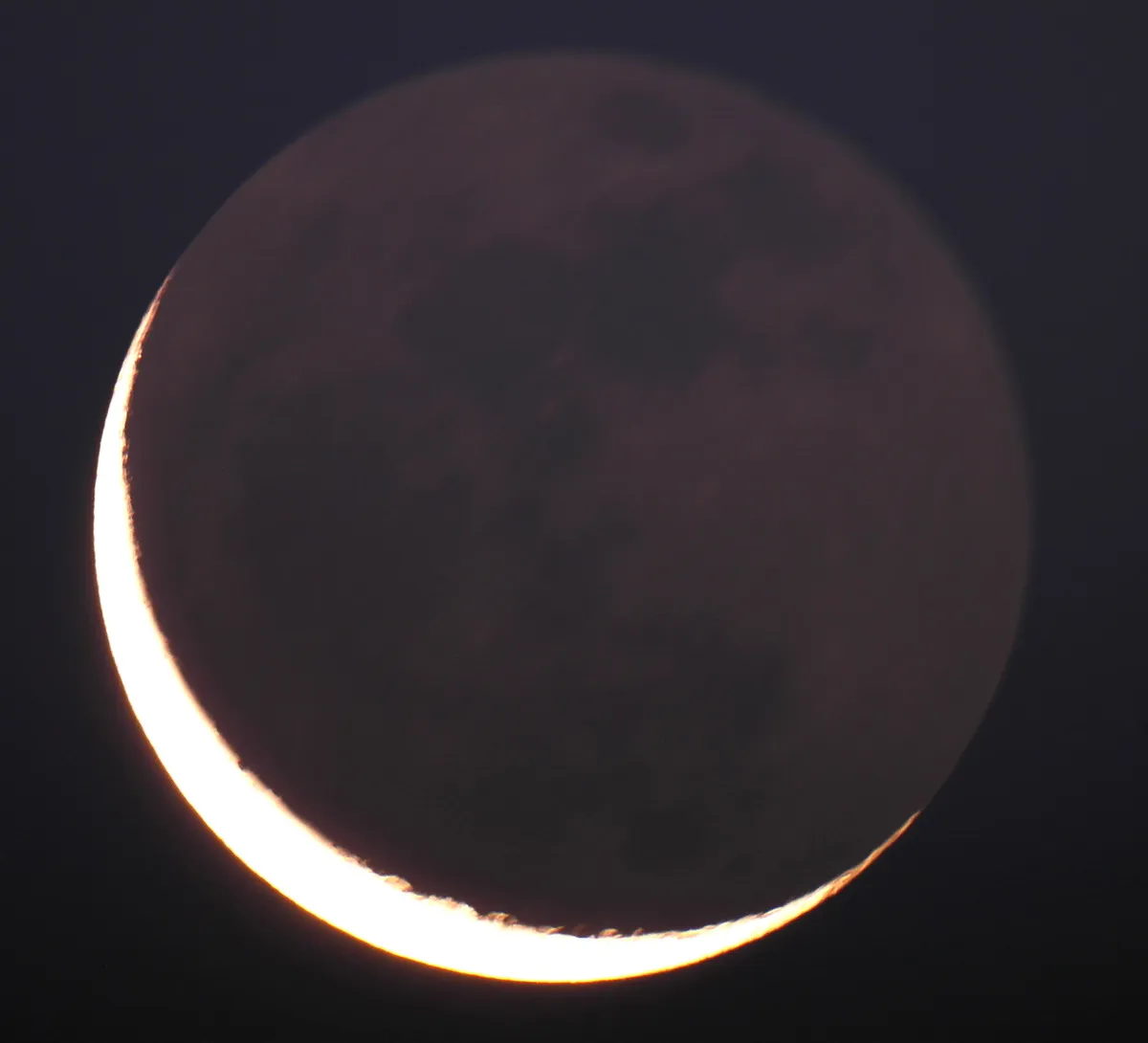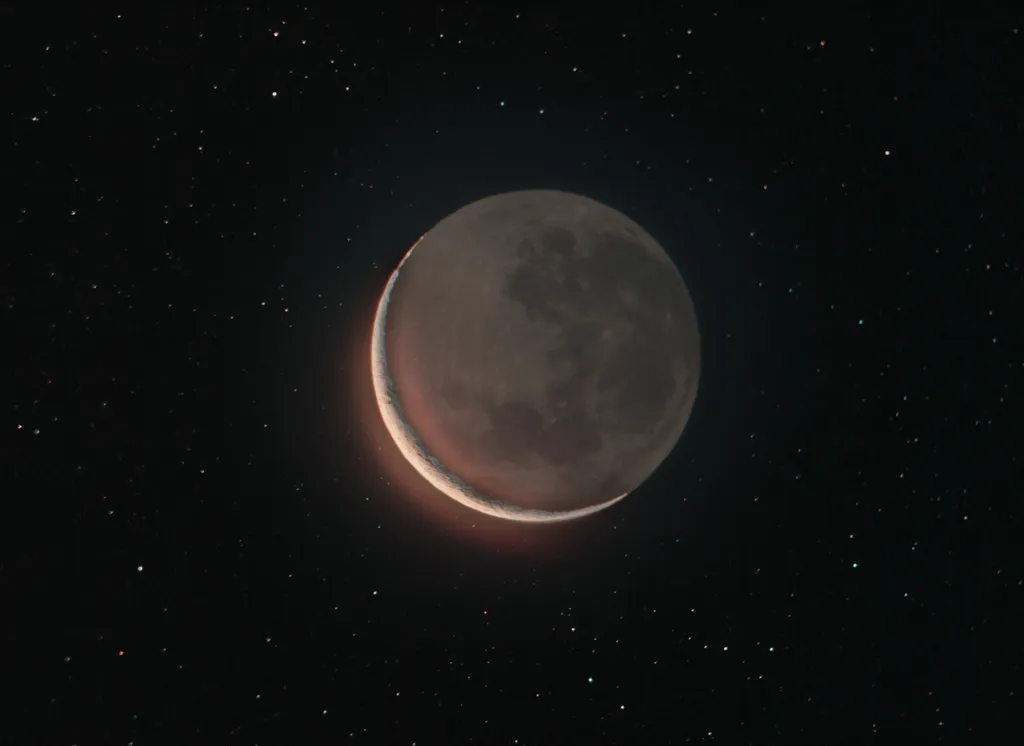Earthshine is a phenomenon that allows us to see the dark, night side of the Moon. To understand the effect, it’s important to be able to imagine what Earth looks like from the Moon.
Our planet is more reflective than the Moon by quite some margin. Although you might not think it, the Moon’s reflectivity is about the same as an asphalt road.
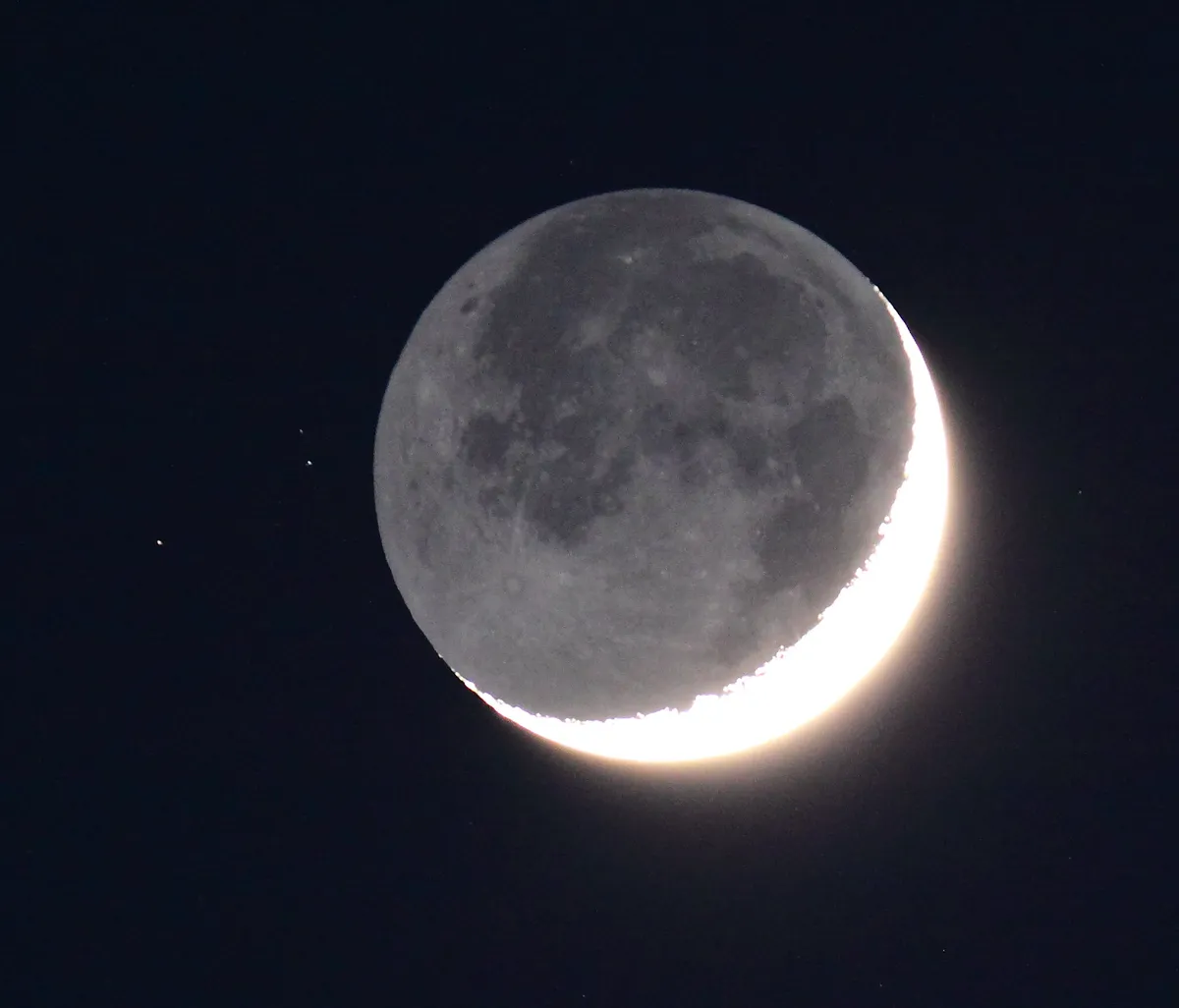
Earth is also approximately four times larger than the Moon. Put together it’s not hard to imagine that Earth would appear big and bright as seen from the lunar surface.
What about the phase of Earth? We’re all familiar with the phases of the Moon caused by the varying Moon-Earth-Sun angle as our neighbour travels around its orbit, but what would Earth look like from the Moon?
It too would go through a complete set of phases but these will be the complementary ones to what we see from Earth.
When the Moon is full in our sky, Earth will be new in the Moon’s sky. When the Moon is a thin crescent, Earth would appear with a large gibbous phase.
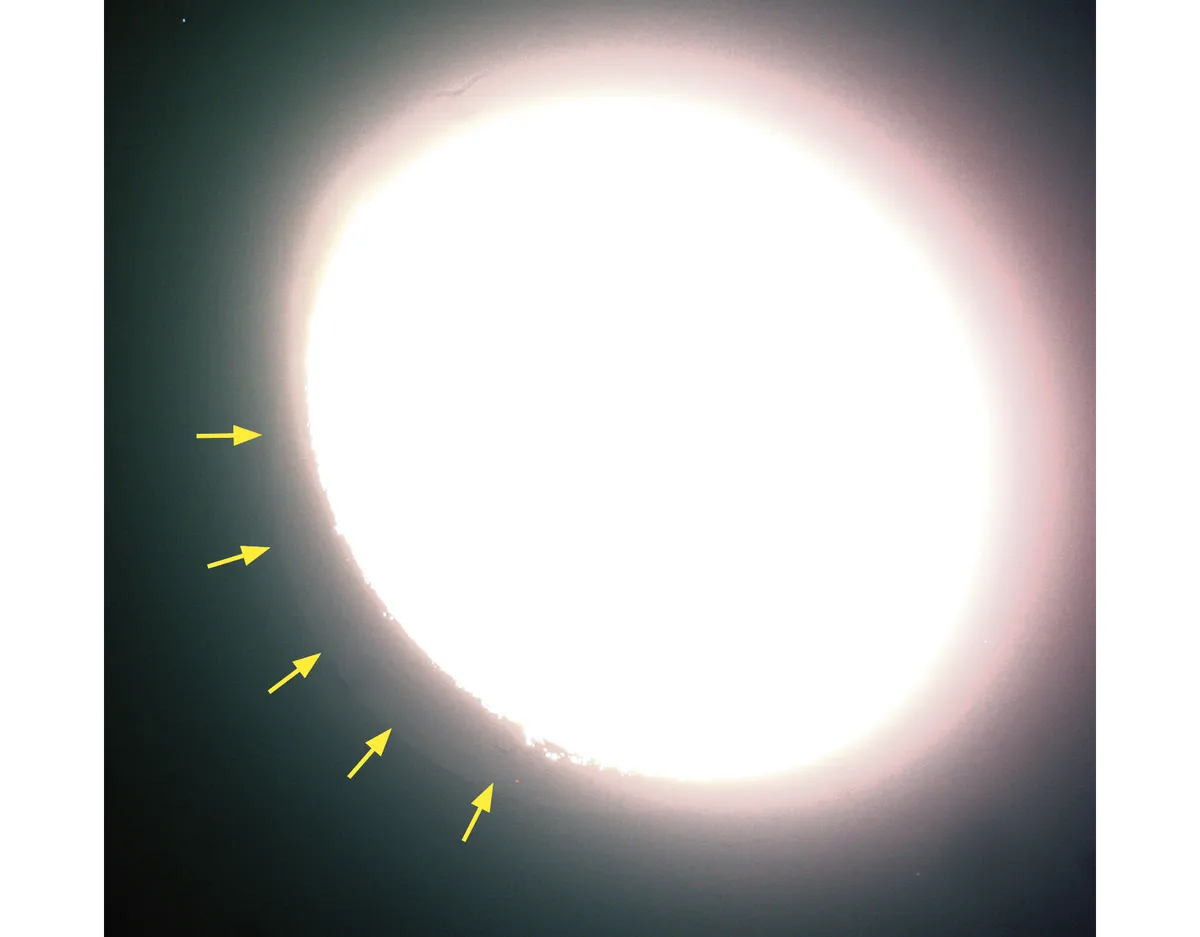
The thin crescents we see just before and after new Moon therefore represent times when Earth’s light shining onto the Moon is at its strongest.
Earth's light illuminates the dark, night portion of Moon and reflects back to Earth, allowing us to see the lunar night hemisphere glowing gently. This is earthshine.
Another, more poetic term for earthshine is ‘the old Moon in the young Moon’s arms’, describing the appearance we get with the early evening crescent Moon when it reappears just after the new phase.
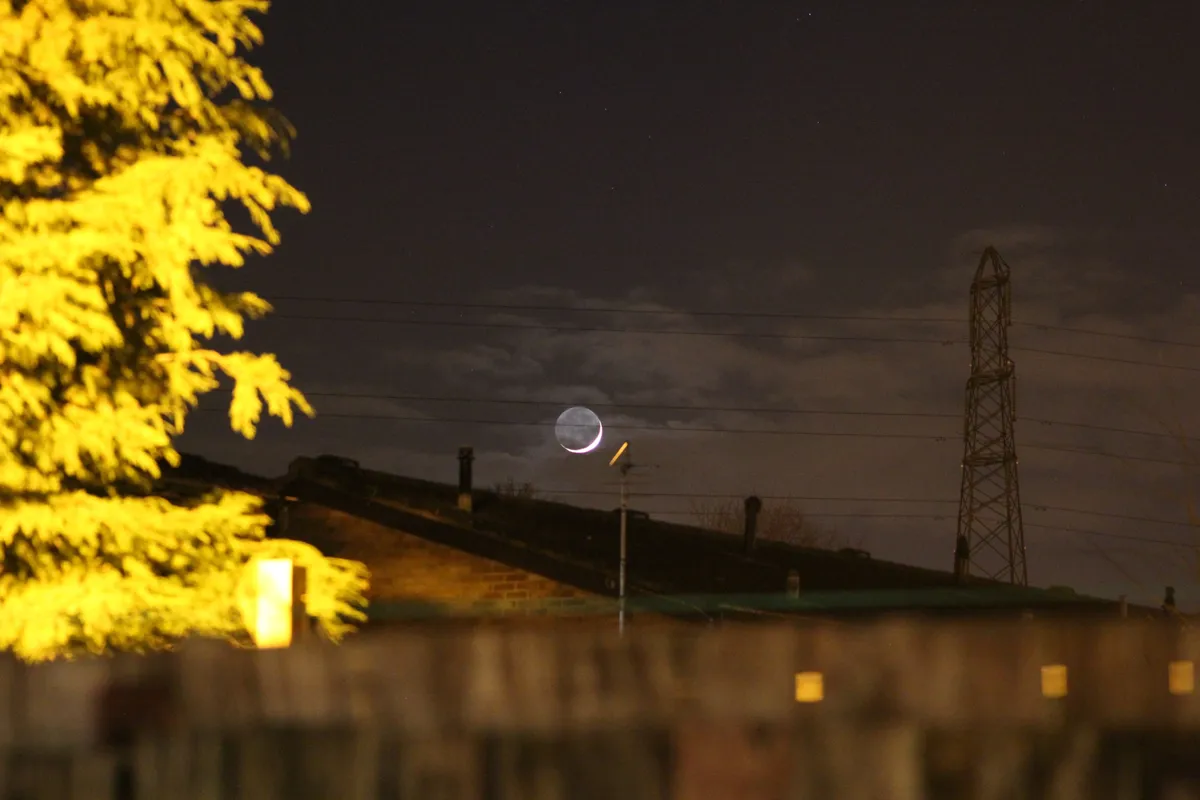
Observing Earthshine
Looking at the earthshine-lit portion of the lunar disc with a scope it is just possible to see certain features. The most obvious is the bright crater Aristarchus near to the western limb.
Photography is another excellent way to reveal features within the lunar night.
Deliberately over-exposing a bright lunar crescent will reveal many details from the ‘dark side’, rendering the night portion as detailed as it appears when properly lit.
It’s pretty easy to see and photograph the earthshine-lit portion of the Moon when the Moon is showing as a thin crescent, but how close to full Moon can you get and still record the effect.
Pictures of Earthshine
Below is a selection of photos of Earthshine captured by BBC Sky at Night Magazine readers and astrophotographers. For advice on lunar imaging, read our guide on how to photograph the Moon or our beginner's guide to astrophotography.
And don't forget to send us your images or share them with us via Facebook, Twitter and Instagram.
This article originally appeared in the March 2020 issue of BBC Sky at Night Magazine.
